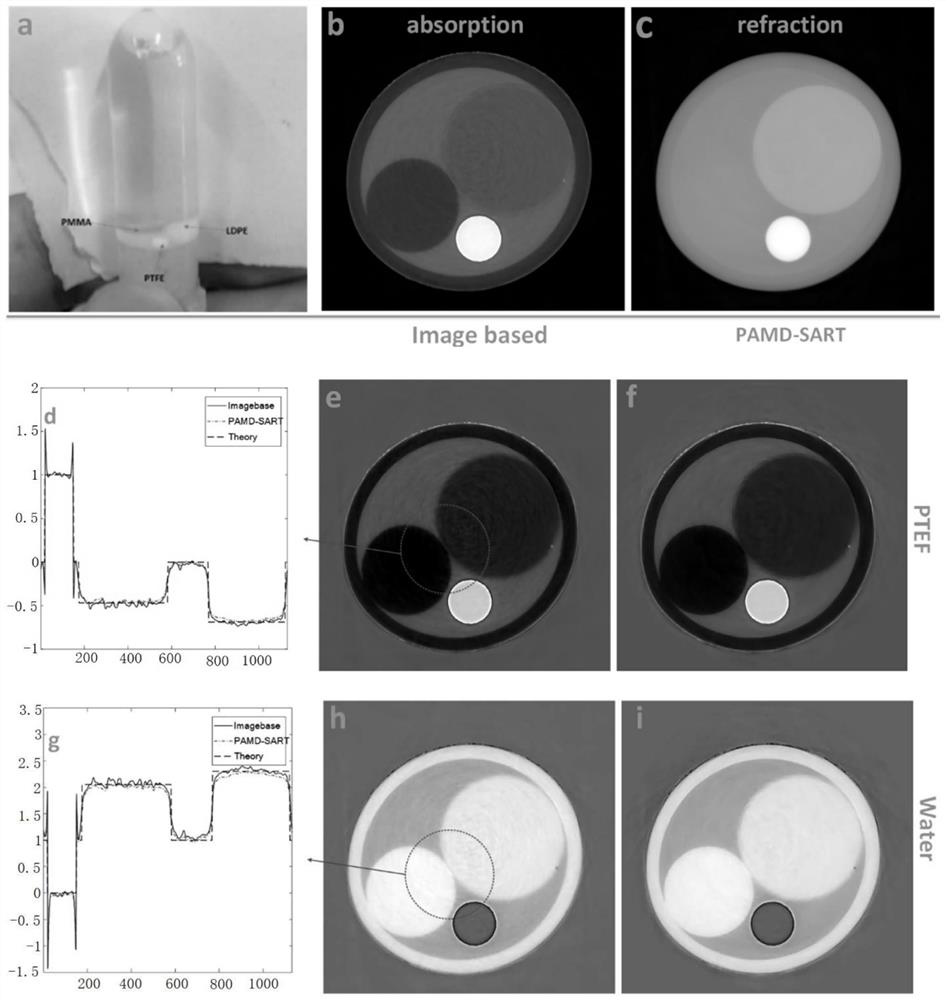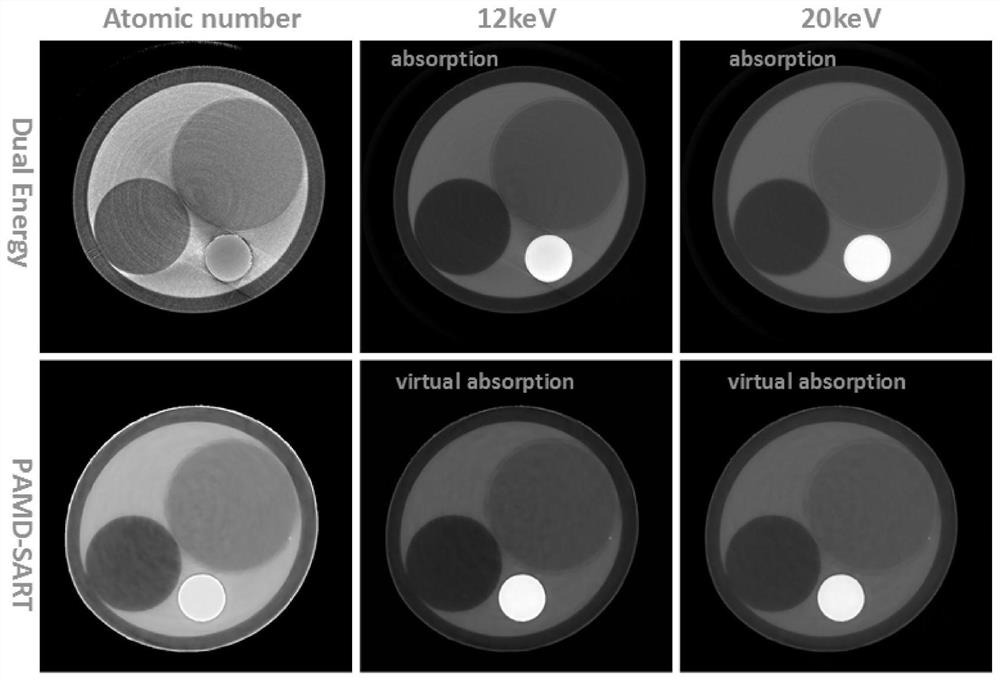Material decomposition and identification method based on phase CT
An identification method and phase technology, applied in the field of material identification, can solve problems such as poor results and noise amplification, and achieve the effect of suppressing noise
- Summary
- Abstract
- Description
- Claims
- Application Information
AI Technical Summary
Problems solved by technology
Method used
Image
Examples
Embodiment Construction
[0067] The present invention will be described in detail below in conjunction with the accompanying drawings and embodiments.
[0068] According to the material decomposition method, in the case of single energy, the linear absorption image of the tested sample can be approximately linearly represented by the linear absorption images of the two substrates. Similarly, the decay rate of the real part of the refractive index of the sample to be tested can also be expressed approximately linearly by the decay rates of the real part of the refractive index of the two substrates. Then, the following equations (1) can be listed:
[0069]
[0070] in:
[0071] μ(x,y) represents the absorption image at the point (x,y) of the measured sample.
[0072] δ(x, y) represents the attenuation rate coefficient of the real part of the refractive index at the point (x, y) of the measured sample, that is, the phase image in this paper.
[0073] mu 1 is the linear absorption image of the fir...
PUM
 Login to View More
Login to View More Abstract
Description
Claims
Application Information
 Login to View More
Login to View More - R&D
- Intellectual Property
- Life Sciences
- Materials
- Tech Scout
- Unparalleled Data Quality
- Higher Quality Content
- 60% Fewer Hallucinations
Browse by: Latest US Patents, China's latest patents, Technical Efficacy Thesaurus, Application Domain, Technology Topic, Popular Technical Reports.
© 2025 PatSnap. All rights reserved.Legal|Privacy policy|Modern Slavery Act Transparency Statement|Sitemap|About US| Contact US: help@patsnap.com



